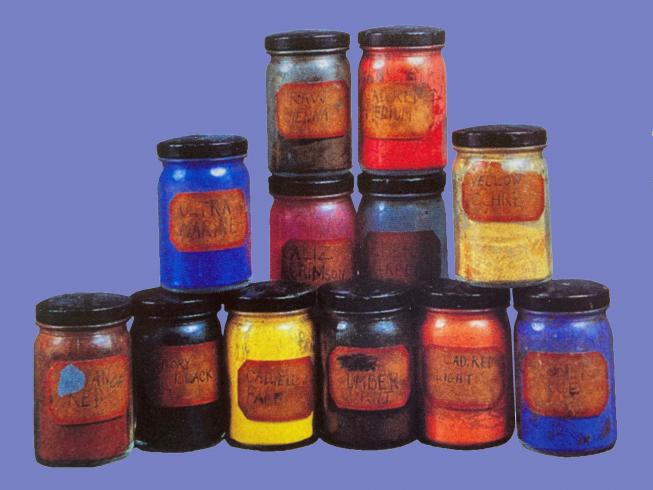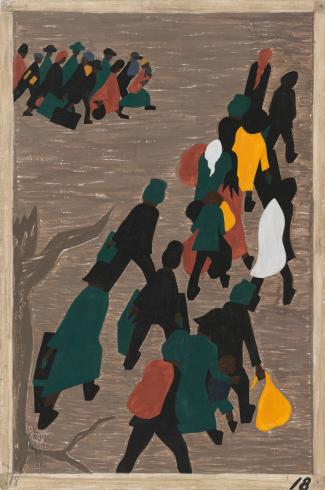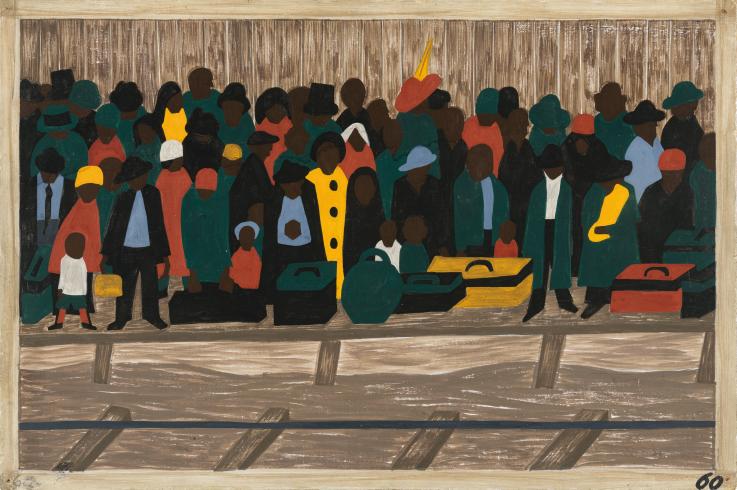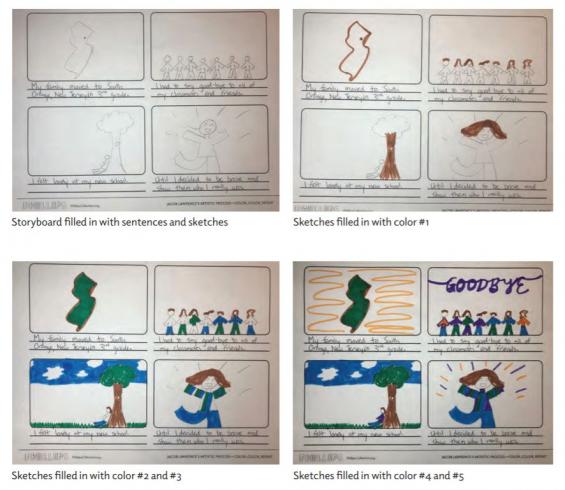Lawrence's Artistic Process - Color
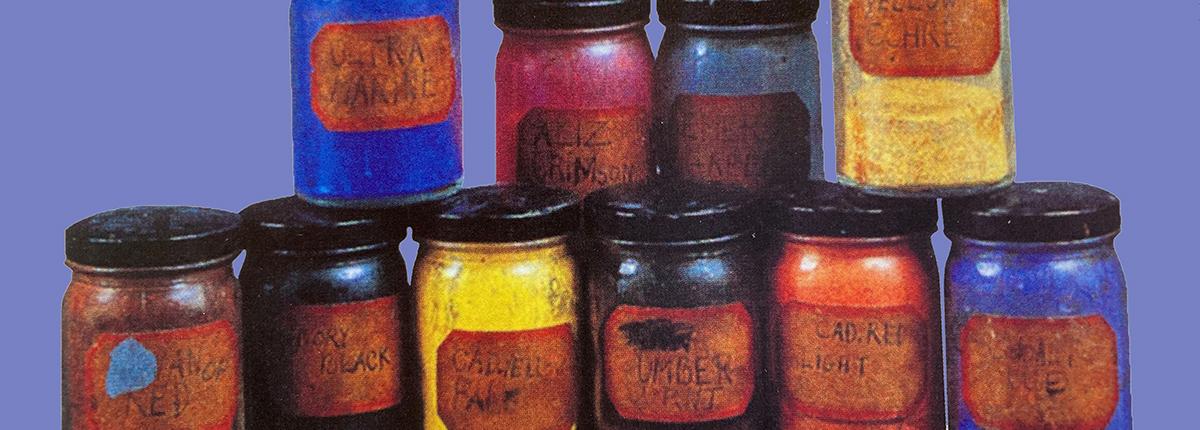
Part 1: Using Color
Introduce:
- Watch this short video on Jacob Lawrence’s process for creating The Migration Series.
Discover:
- In groups of 3 or 4, have students study Panels no. 23, 32, and 59.
- In their groups, students will discuss and then share their responses to the following questions:
- What colors does Lawrence use in his paintings?
- Which colors appear most often?
- Which colors appear less often?
- What do you notice about the colors in the paintings? (For additional support, you can ask students to try to count how many different kinds of colors he uses.)
Part 2: Artmaking
- Explain to students students Lawrence’s unique process for using color.
- Sometimes less is more. Jacob Lawrence liked to use very few colors in his paintings. He painted the same colors from panel to panel. For example, he laid out all of his panels and started by painting black on every panel before moving on to the next color. He did this because it made his paintings look like they go together as a series.
- Explain to students that they are going to use Lawrence’s process to create their own series, using this storyboard template. They could use markers, colored pencils, crayons, or paint. They will follow this process:
- IDENTIFY an important event in your life (examples include, but are not limited to: a new sibling, a move to a new home or city, a birthday, first day of school, a field trip).
- EXPRESS in a few sentences what happened in this event at the beginning, middle, and end. Students should have at least three parts of the event. They can also explain how they were feeling during different parts of the event. Each part will be its own picture.
- In pencil, they should draw out each part of the event, following the parts of the event that they wrote out.
- After they have sketched out each part, fill in the drawing with a limited set of colors. They can choose up to five colors.
- As they color in their pictures, they should use one color at a time, coloring in all of their scenes with that one color, before moving onto the next color, like Jacob Lawrence did.
Part 3: Reflection
Reflect:
- Have students share their artwork. Students should explain the story they’re expressing in their art.
- Students should describe their artmaking experience by responding to the following questions:
- What did you like about this process?
- What did you find challenging about this process?
- How did the limit on how many colors you could use affect how you told your story?
Additional Context
Lesson Context
“I tried to create a staccato-like rhythm over and over and over again [with] the shapes as they move…I build on the geometry and I love it.”–Jacob Lawrence
In 1940, Jacob Lawrence rented his first studio to prepare and lay out the 60 panels that would comprise The Migration Series. He wrote panel captions from his initial research, often with the help of fellow artist and future wife, Gwendolyn Knight. He then developed drawings to accompany each of the 60 captions.
Lawrence liked to use very few colors in his paintings. He used flat shapes of color to create a sense of pattern and rhythm that mimicked the flow of travel. In The Migration Series, he painted with the same colors from panel to panel. This way, he made his paintings look like they go together as a series. Not only did he use the same colors, he liked to use them almost “out-of-the-tube.” Lawrence said, “I didn’t mix color. I left it pure as it was.”
Key Terms
Hue: This term is often used interchangeably with color, however there is a difference. Color is used to describe every hue, tint, tone or shade that we see. White, black, and gray are colors. Hue refers to the specific colors we’re looking at and it refers to the origin of the color that we see. You can think of hue as one of the six primary or secondary colors - red, yellow, blue, green, purple, and orange. White, black, and gray are not hues.
Primary colors: These are colors that cannot be mixed from other colors. The primary colors are red, yellow, and blue.
Secondary colors: These are colors created by mixing two primary colors. The secondary colors are green (yellow and blue), purple (blue and red), and orange (red and yellow).
Shade: A mixture of color with black. This darkens the color.
Tone: The lightness or darkness of a color.
Tint: A mixture of color with white. This lightens the color.
